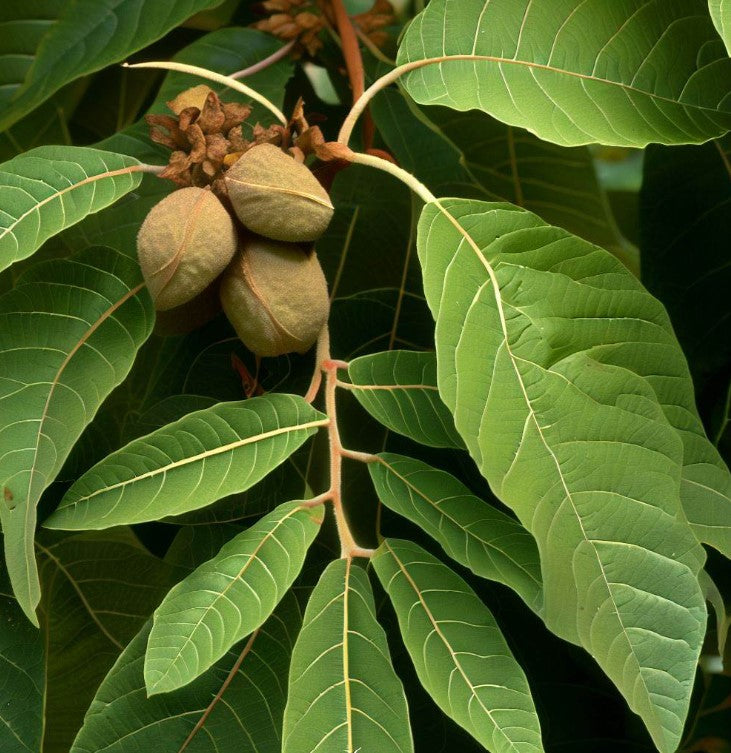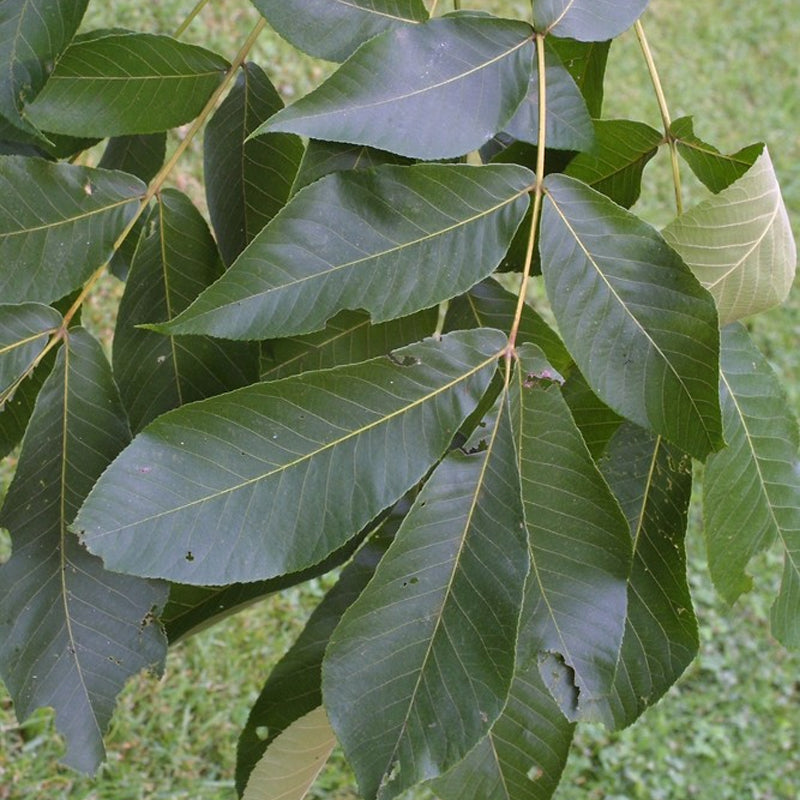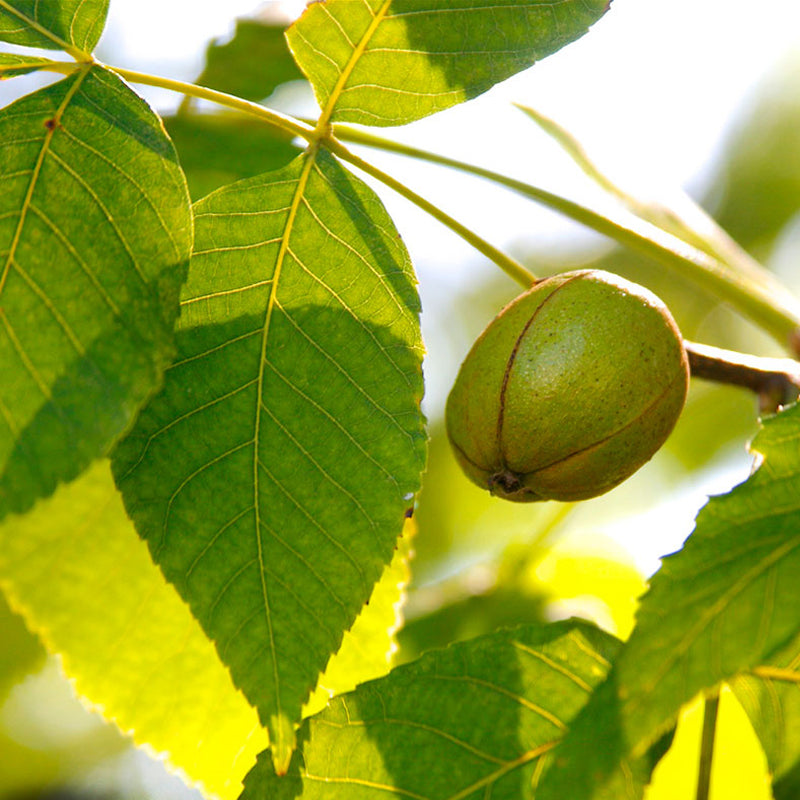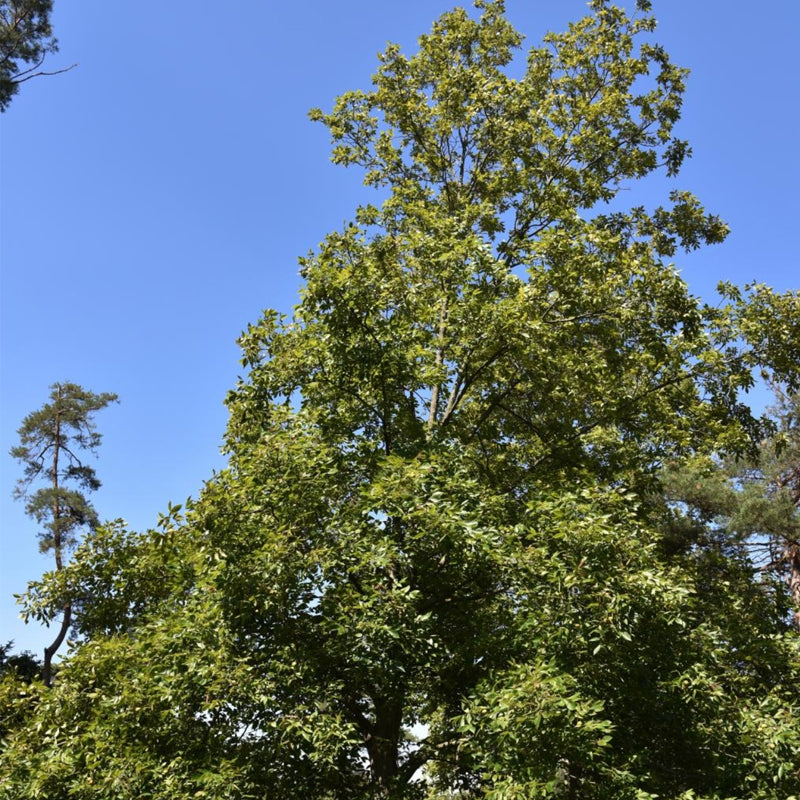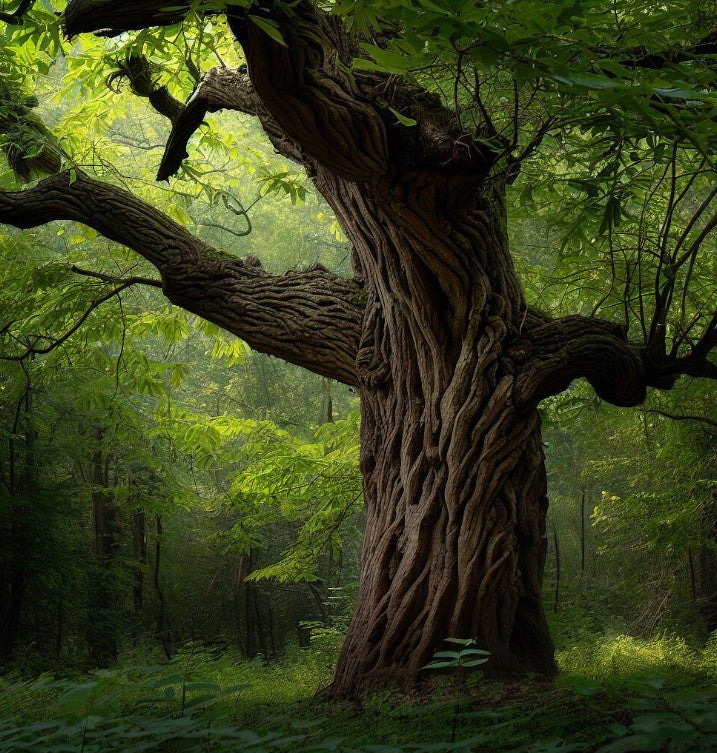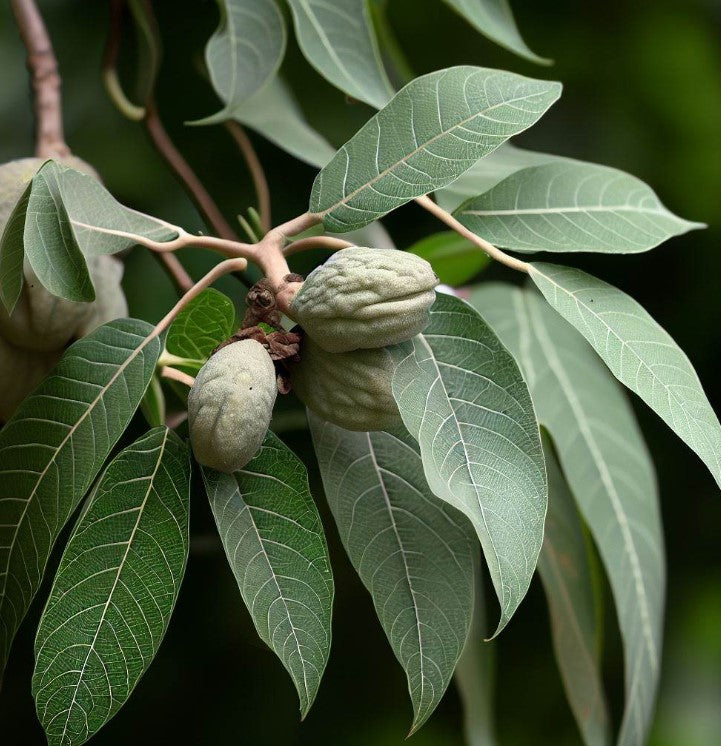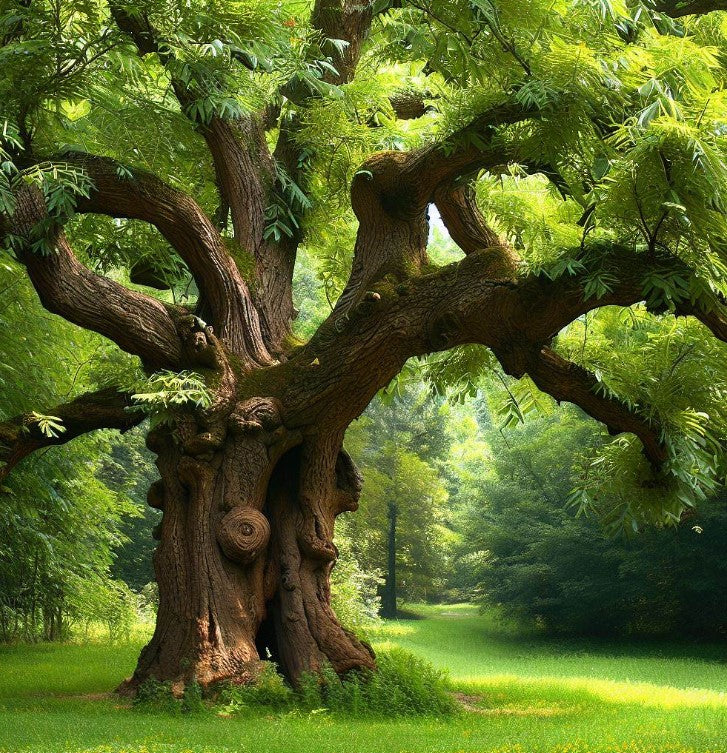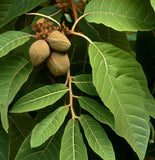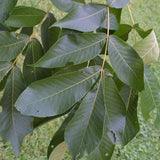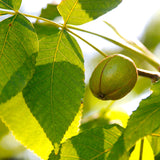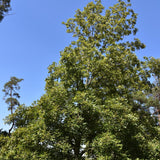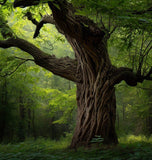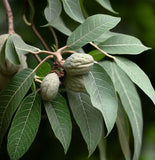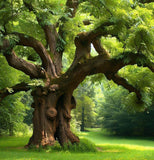Carya laciniosa (Shellbark Hickory)
Carya laciniosa (Shellbark Hickory) is a large deciduous tree native to the eastern United States.
Appearance: Shellbark Hickory is a tall tree that can reach heights of 70 to 100 feet (21 to 30 meters) with a spread of 40 to 60 feet (12 to 18 meters). It has a straight trunk and an open, rounded crown. The leaves are pinnately compound, consisting of 7 to 9 leaflets that are elongated and pointed. The foliage is dark green during the growing season and turns golden-yellow in the fall.
Habitat and Range: Shellbark Hickory is native to the eastern United States, primarily in the Midwest and the eastern parts of the country. It is often found in bottomland areas, floodplains, and along riverbanks. It prefers well-drained soils.
Bark: The bark of Shellbark Hickory is distinctive and easily recognizable. It is light gray to brown and has long, thick, shaggy strips that peel away from the trunk in a characteristic manner.
Flowers and Fruits: Shellbark Hickory is monoecious, meaning it has separate male and female flowers on the same tree. The flowers are small and inconspicuous, appearing in early spring. The female flowers give rise to large, pear-shaped nuts known as hickory nuts. The nuts have a hard, thick shell and a sweet, rich flavor. They are edible and highly valued for culinary uses, such as baking and snacking.
Wood: The wood of Shellbark Hickory is strong, tough, and durable. It is used in the construction of furniture, flooring, tool handles, and sporting goods. It is also used for smoking meats due to its desirable flavor.
Cultivation: Shellbark Hickory trees are not commonly cultivated on a large scale, but they can be grown from seed. They require a long growing season and full sun exposure. They are typically found in USDA hardiness zones 4 to 8.
Ecological Importance: Shellbark Hickory trees provide food and habitat for various wildlife, including squirrels, birds, and deer. The nuts are an important food source for many animals, and the tree itself provides shelter and nesting sites.
Botanical Name : Carya laciniosa
Common Name : Shellbark Hickory
Height : 60- 80 ft
Spread : 40 ft
Germination Info : Seed requires 90-120 days cold moist stratification
Hardiness zone : 5-8
Average seed per ounce : Approx. 2

